Papers by Mohammad Kashiripoor

Urban construction and architecture, 2024
I'm thrilled to announce the publication of my latest research article in Urban construction and ... more I'm thrilled to announce the publication of my latest research article in Urban construction and architecture journal. This article published as a second part of study about “Fourth wave technologies in construction and architecture: from idea to realization” and exact focused on new initiative ranges in this area.
The Industrial Revolution is the restructuring of society under the influence of innovations in technology and technique, which is accompanied by a jump in productivity. To-day, the 4th revolution is taking place, which is rapidly changing the landscape of various areas of life, including architecture and the construction industry. The Industry 4.0 revolution connects technologies used in organizations and people's daily lives. It combines physical and digital technologies. But it doesn’t develop as a daily simple life in architecture and construction industry like many other industries like as automotive, aircraft, electronic etc. Part two of the research is devoted to the idea and explanation of fourth wave technology in construction and architecture.
Vestnik SGASU. Gradostroitelʹstvo i arhitektura, Jun 21, 2024
Ключевые слова: строительство, технология четвертой волны, 4ИР, индустрии 4.0, строительный робот... more Ключевые слова: строительство, технология четвертой волны, 4ИР, индустрии 4.0, строительный робот, искусственный интеллект, дополненная реальность (AR), виртуальная реальность (VR), расширенная реальность (XR)
Научная новизна исследования заключается в изучении современных концепций и принципов устойчивого... more Научная новизна исследования заключается в изучении современных концепций и принципов устойчивого развития городов, связанных с городскими структурами, и предложении соответствующей и подходящей концепции устойчивого городского развития для малых городов Ирана.

Urban construction and architecture
In the second half of 2021, companies around the world decided to make a massive digital transiti... more In the second half of 2021, companies around the world decided to make a massive digital transition into the virtual space. The development of metaverse poses a lot of questions for the society, but so far, few people think about how the appearance and structures of cities will change if the majority of residents go into virtual reality. The article discusses the latest trends and directions in society and science, which is known to us as the metaverse, attempts to discuss this trend and its connection with architecture and urban planning through scientific literature, their analysis and the actual stage of development of this trend. The purpose of study is to provide a basic understanding of the metaverse and its application analyses to cities at this stage. The tasks of the study are: definition and understanding of the metaverse and its working systems; application of this direction/trend in cities; reveal the main advantage and disadvantage of using this direction for cities. To...

Urban construction and architecture, 2024
The Industrial Revolution is the restructuring of society under the influence of innovations in t... more The Industrial Revolution is the restructuring of society under the influence of innovations in technology and technique, which is accompanied by a jump in productivity. Today, the 4th revolution is taking place, which is rapidly changing the landscape of various areas of life, including architecture and the construction industry. The Industry 4.0 revolution connects technologies used in organizations and people's daily lives. It com-bines physical and digital technologies. But it doesn’t develop as a daily simple life in architecture and construction industry like many other industries like as automotive, air-craft, electronic etc. The relevance of the study is to study and analyze the stage of the historical event on the industrial revolutions (specially fourth industrial revolution) and his realization in today's construction and architecture industry.
Purpose of study: a comprehensive review of contemporary and historical literature related to fourth industrial revolution, and his realization level in the industry with specific focus on construction and architecture industry. Thus, the main tasks of the study can be distinguished as follows: review of historical literature and basic under-standing of the industrial revolutions; understanding of Industry 4.0 and its principles and benefits; reveal and introduce Industry 4.0 in construction and architecture industry; some samples about using Industry 4.0 in construction and architecture industry.
The first part of the study is devoted to the basic concept, definition, and historical events of the fourth wave technology. In conclusion, the advantages and main problems of this technology are described.
The research used the method of analysis of scientific and historical literature and documents related to the Industrial Revolution (specially fourth industrial revolution) and his achievement in the construction and architecture industry to achieve and formulate conclusions.
The conclusion of study is about today’s stage of realization of fourth industrial revolution in the construction and architecture industry and his point of view to next industrial revolution which start from 2017. The author believes that the development of the construction and architecture industry now and in the future depends on the attention and use of new industries and professionals in this industry specially IT specialists and technology.
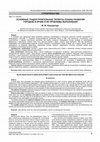
Вестник БрГТУ, 2024
В последние годы урбанизация Ирана претерпела различные трансформации в результате различных собы... more В последние годы урбанизация Ирана претерпела различные трансформации в результате различных событий национального и международного масштаба. С созданием Планово-бюджетной организации Ирана в 1948 году комплексное планирование стало осуществляться с помощью иностранных советников. Эта модель городского планирования, которая основана на существующих американских и европейских моделях, имела очень большое влияние в Иране, особенно после переворота 1953 года. Комплексное планирование стало доминирующим дискурсом городского развития и планирования в Иране. В Иране, как и в других странах, возникла необходимость во внедрении эффективных современных методов городского планирования, поскольку население городов резко увеличивалось из-за явления городского дрейфа.
Актуальность исследования: изучение и анализ этапов градостроительства в Иране и выявление основных методов решения проблем, связанных с планами развития городов Ирана.
Цель исследования: всесторонний обзор и анализ современной и исторической литературы, градостроительной документации и законодательства иранских городов. Таким образом, основные задачи исследования можно выделить следующие: обзор исторической литературы и градостроительного законодательства Ирана; рассмотрение основных планов развития городов Ирана и их теоретические основы и процессы; основные различия выполнения таких планов между Ираном и другими странами.
В процессе исследования используется метод анализа научной и исторической литературы и государственных документов, связанных с градостроительным законодательством Ирана, и их реализация и выполнение для достижения и формулировки выводов. Вывод исследования заключается в рассмотрении градостроительного законодательства и градостроительных проектов Ирана и выявлении основных особенностей решения проблем, связанных с планами развития городов.
Научная новизна исследования заключается в анализе, изучении и определении планов развития городов Ирана и выявлении основных проблем и недостатков, связанных с применением планов развития городов.
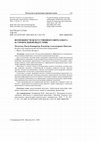
Tomsk State University of Architecture and Civil Engineering, 2024
Аннотация. Актуальность. В статье рассматривается эффективность и возможность использования совре... more Аннотация. Актуальность. В статье рассматривается эффективность и возможность использования современных технологий в строительной индустрии. Цель исследования: изучение новых тенденций в строительстве, оценка актуальности и эффективности внедрения и использования искусственного интеллекта в строительной индустрии, рассмотрение преимуществ и недостатков исследуемых инноваций в современных реалиях, анализ работоспособности и эффективности применения новых технологий в мировой строительной индустрии. Материалы и методы: обзор и систематизация научных источников, изучение мнения сторонних экспертов и наблюдателей на ресурсах открытого доступа, порталах частных энтузиастов, вовлечённых в процесс исследования путей внедрения и реализации современных технологий в строительной индустрии. Результаты и выводы: приведены методы и условия использования современных технологий в мировой практике, освещены недостатки и преимущества технологий, наглядно продемонстрированы результаты их работы. Рассмотрено понятие «искусственный интеллект», раскрыта необходимость его применения в строительной индустрии, проанализированы преимущества и недостатки использования новейших технологий. Статья предназначена для ознакомления научного сообщества и широкого круга читателей с проведённой исследовательской работой в сфере современных технологий, применяемых в строительной индустрии.

Samara State University of Architecture and Civil Engineering, 2023
Special urgency for small cities in Iran represents developing problem guiding principles of tran... more Special urgency for small cities in Iran represents developing problem guiding principles of transformation and development of architectural and planning structure, as well as applied technique of its evaluation in accordance with the requirements of sustainable development. This article describes leading forms of urban development settlements and identifies common principles which influence on sustainable urban development.
The objective of this article is to assert sustainable development theories which meets city planning structure and develop a sustainability concept for Iranian small cities. This will be done through studies that were influenced by addressing a rethinking in order to emphasize adapting new trend of sustainable development which focused on city planning structure, and suitable for Iranian small cities condition. Thus, the main tasks of study could be formulated as follows: define Iranian small cities planning structure features and problems; study recent sustainability documents and related urban development forms and principles; comparative analysis; and finally suggest a creative solution for architectural and planning structure for Iranian small cities condition.
The research used the method of analysis of latest international scientific literature and documents related to urban development sustainability in order to evaluate, compare and achieve a proper solution for Iranian small cities structures sustainability. It should be noted that such kind of analysis would be done only after analyzing and identifying the features and problems of the planning structure of Iranian small cities.
Results of study: The article reveals recent sustainable urban development forms and its interpretations in modern urban development theories; demonstrates Iranian cities structure features; Iranian cities general plans problems; urban forms and design principles for achieving the goals of sustainable urban development for conditions of Iran.
The scientific novelty of research is to study recent urban sustainable development forms and principles which related to urban structures; and suggest an appropriate and suitable concept for Iranian small cities development sustainability.
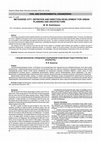
Bulletin of Brest State Technical University, 2023
Technology corporations believe that the Internet in its current form will become irrelevant in t... more Technology corporations believe that the Internet in its current form will become irrelevant in the foreseeable future. In its place, the metaverse will come – a global virtual space in which it will be possible to live, work, meet friends and do all other daily activities. Many consider this direction as a continuation of the sustainable development and smart city concept. The article considered the latest data on the metaverse direction, tries to analyze this trend and its relationship with architecture, sustainable development and urban planning with the help of scientific literature, their analysis and the actual stage of this trend.
This analysis led to the conclusion that each city has its own system of consistent urban thinking, and solutions to achieve the goal of sustainable development, including the metaverse direction. In conclusion, based on the entire analysis, the author formulated the relationship of metaverse with the concept of sustainable development, the advantages, risks and disadvantages of metaverse for the city and citizens.

Samara State Technical University, 2023
In the second half of 2021, companies around the world decided to make a massive digital transiti... more In the second half of 2021, companies around the world decided to make a massive digital transition into the virtual space. The development of metaverse poses a lot of questions for the society, but so far, few people think about how the appearance and structures of cities will change if the majority of residents go into virtual reality. The article discusses the latest trends and directions in society and science, which is known to us as the metaverse, attempts to discuss this trend and its connection with architecture and urban planning through scientific literature, their analysis and the actual stage of development of this trend.
The purpose of study is to provide a basic understanding of the metaverse and its application analyses to cities at this stage.
The tasks of the study are: definition and understanding of the metaverse and its working systems; application of this direction/trend in cities; reveal the main advantage and disadvantage of using this direction for cities. To achieve the proposed result, it is necessary to use the method of analysis of scientific literature and documents related to the metaverse concept and its application in cities to reach and form conclusions. This study concluded in studying the latest direction and application of metaverse in urban planning and identifying some of its ad-vantages and disadvantages.
The scientific novelty of the study lies in the study and application of the metaverse concept in cities and the identification of its main advantages and dis-advantages. The author emphasizes that this direction does not actually reconstruct cities, but on the contrary, a new function of reality appears in the city that people want to see and, as a result, should make cities more livable.
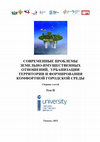
Тюменский индустриальный университет, 2023
Выявление и распространение пандемии коронавируса во всех странах мира с начала 2020 года, не тол... more Выявление и распространение пандемии коронавируса во всех странах мира с начала 2020 года, не только разрушило многие жизни, но и изме-нило восприятие многих образов в разных сферах и науках, и за одно при-вело к многочисленным недостаткам, в том числе кризису управления и экономическому кризису в городах. Большая проблема в том, что все эти недостатки резко проявились в населенных пунктах и городах, где архи-текторы и градостроители сталкивались с большими задачами. Некоторые города мира получили хорошие результаты (в сравнение другими города-ми) в контроле пандемической ситуации благодаря их развитой инфра-структуре и ИКТ, которые создавали на основе концепции устойчивого развития или/и умного города. В данном исследовании коротко излагаются действия и решения этих городов в пандемической ситуации (COVID-19) с помощью обзорных примеров. Таким образом, можно выявить новый комплексный подход к решению проблем и лучшему восстановлению в бу-дущих похожих ситуациях.
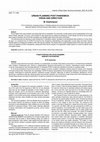
Vestnik Brestskogo gosudarstvennogo tehničeskogo universiteta, Nov 24, 2022
The principles of the urban formation have always been built on socialization, the construction o... more The principles of the urban formation have always been built on socialization, the construction of public spaces and the systematization of the huge human masses' interaction. Of course, in the formation of urban space there are objects that allowing you to feel solitude, but still the city has always been a place of interaction. But the COVID-19 pandemic has changed modern views of the urban environment. The article discusses the relevance of urban development in a pandemic situation. Examples of city development after pandemics in human history are given. It is considered how the COVID-19 coronavirus has changed the understanding of the organization of urban space and human housing. Possible options for changing the conditions of the urban area are analyzed. This research tries to review developed factors of the urban area under the influence of epidemics and their consequences, among which there may be changes in the organization of public spaces on a scale from specific urban are to global solution.
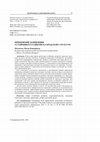
Вестник Томского государственного архитектурно-строительного университета, 2023
В настоящее время проблемам устойчивого развития городской структуры уделяется большое внимание. ... more В настоящее время проблемам устойчивого развития городской структуры уделяется большое внимание. Созревание концепции устойчивости, заложенной в городском планировании и архитектуре, привело к появлению некоторых других подходов и идеологий. Они могут иметь разные акценты и в целом согласуются с принципами и целями устойчивого развития городов. С конца прошлого века применение этой концепции в городской среде повлияло на изменение города и его структуры. Эти изменения должны привести к повышению качества жизни людей и улучшению их отношения к окружающей среде.
Цель настоящего исследования заключается в рассмотрении влияния применения концепции устойчивого развития в основных текстурах города, которые здесь являются структурой города. Основной задачей этой цели является рассмотрение и анализ применения и влияния данной концепции на развитие городских территорий и их структуры, а также проблем, стоящих на пути достижения поставленных целей. Основное внимание уделяется решению проблем влияния данной концепции на городскую структуру. Для достижения этой цели сначала рассматривается понятие устойчивого развития и его применение в городе, а затем города и их структура до применения концепции устойчивого развития и после применения этой концепции в структуре города.
Данный анализ позволил прийти к выводу, что каждый город имеет собственную систему последовательного урбанистического мышления и решений для достижения цели устойчивого развития, определённый подход к структурному решению. В заключении на основании всего анализа автором сформулированы преимущества и недостатки использования такой концепции в структуре города.
This article reviews the subject-matter literature on parametric design and decision-making proce... more This article reviews the subject-matter literature on parametric design and decision-making processes, and explains the basic principles of finding the right solutions in the process of parametric design.
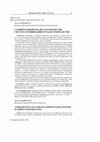
Vestnik Tomskogo gosudarstvennogo arkhitekturno-stroitel'nogo universiteta, 2022
Аннотация. Концепция устойчивого развития была принята в начале 1990-х гг. и с тех пор получила ш... more Аннотация. Концепция устойчивого развития была принята в начале 1990-х гг. и с тех пор получила широкое распространение в большинстве научных и промышленных отраслей. С момента появления этой концепции были предложены различные определения и применены разные методы для ее реализации. В настоящее время устойчивое развитие города рассматривается на уровне общей стратегии и пока не разработано четких градостроительных критериев, методов проектирования города и его застройки, удовлетворяющих целям данного подхода. Сертификация как система обладает высокой важностью на межгосударственном уровне, но еще большую роль она играет в контексте устойчивого социального развития. Как правило, сертификация применяется для того, чтобы оценить устойчивость отдельных строений, зданий и иных образований градостроительства. Важность целей и задач, решаемых системой сертификации, актуализирует проблему разработки мер, направленных на адаптацию и поступательное развитие обозначенной системы под нужды современного градостроительства. В статье рассматриваются актуальные вопросы сертификации и такие системы сертификации в сфере градостроительства, как DGNB, LEED, BREEAM, HQE, Green Star и CASBEE. Также проводится сравнительный анализ обозначенных систем сертификации. В заключении приведены результаты анализа этих систем, а также рассматриваются их преимущества и недостатки. Результат этой оценки может быть полезен для национальных и местных органов власти, урбанистов, проектировщиков, строителей, инвесторов и т. д. Следует добавить, что ни одна из рассмотренных систем сертификации не является универсальной, каждая из них обладает как преимуществами, так и недостатками. Можно сделать вывод, что применение систем сертификации в градостроительстве способствует устойчивому развитию поселений. Научная новизна: сравнение шести действующих основных мировых стандартов, их систем сертификации в градостроительстве, их критерии оценки, и их сравнение с основными аспектами устойчивого развития (экономический, экологический, социальный).
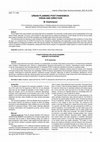
Brest State Technical University, 2022
The principles of the urban formation have always been built on socialization, the construction o... more The principles of the urban formation have always been built on socialization, the construction of public spaces and the systematization of the huge human masses' interaction. Of course, in the formation of urban space there are objects that allowing you to feel solitude, but still the city has always been a place of interaction. But the COVID-19 pandemic has changed modern views of the urban environment. The article discusses the relevance of urban development in a pandemic situation. Examples of city development after pandemics in human history are given. It is considered how the COVID-19 coronavirus has changed the understanding of the organization of urban space and human housing. Possible options for changing the conditions of the urban area are analyzed. This research tries to review developed factors of the urban area under the influence of epidemics and their consequences, among which there may be changes in the organization of public spaces on a scale from specific urban are to global solution.
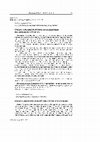
Вестник Томского государственного архитектурно-строительного университета, 2022
Представленное исследование делает попытку предсказать возможные влияния и последствия современно... more Представленное исследование делает попытку предсказать возможные влияния и последствия современной градостроительной концепции (смарт-урбанизм) во время пандемии коронавируса (COVID-19). Статья раскрывает более подробно концепцию смарт-урбанизма, принципы, применяемые в мировой практике в период пандемии COVID-19, освещает специфику проектов, которые относятся к концепту смарт-урбанизма. В статье представлены преимущества и недостатки смарт-урбанизма в пандемической ситуации.
Актуальность исследования: изучение современной градостроительной концепции (смарт-урбанизма) в пандемическое время и ее преимущества и недостатки в решении проблем в таких условиях.
Цель исследования: изучение современных тенденций градостроительного проектирования, их эффективности и недостатков для решения проблем в пандемической ситуации (COVID-19).
Надо отметить, что для достижения цели исследования необходимо определить термин смарт-урбанизма, его принципы и практику; выявить особенности пандемической ситуации, ее характеристики и нужды города в сложившийся период; применить решения данной концепции (смарт-урбанизма) в городах в пандемическое время.
В процессе исследования используется метод критического анализа научной литературы и документов, связанный с концепцией смарт-урбанизма и его применением во время пандемии для достижения и формирования выводов.
Данное исследование заключается в изучении способностей концепции смарт-урбанизма и ее достижений для контроля пандемии в городе.
Научная новизна заключается в изучении и анализе градостроительной концепции умного города во время пандемии, ее преимуществ и недостатков для достижения контроля и нахождения решений в похожих ситуациях.
Технология 3D-печати зданий – это новая технология строительства, начавшаяся с изобретением 3D-пр... more Технология 3D-печати зданий – это новая технология строительства, начавшаяся с изобретением 3D-принтера. В статье представлена новая технология 3D-печати зданий для устойчивых домов будущего, с указанием на Contour Crafting (от англ. «Контурное строительство») как на перспективную технику, которая может произвести революцию в строительной отрасли в ближайшем будущем. Эта технология имеет множество преимуществ, таких как сокращение затрат и времени, минимизация загрязнения окружающей среды, снижение смертности на строительных площадках. Несмотря на многочисленные преимущества и выгоды этой новой технологии, у нас, конечно же, есть некоторые опасения, которые кратко изложены в выводах, поскольку технология все еще имеет много ограничений.
В связи с развитием строительной отрасли и компьютерных технологий остро стоит вопрос максимально... more В связи с развитием строительной отрасли и компьютерных технологий остро стоит вопрос максимального внедрения компьютерных инноваций в строительство с целью повышения качества и упрощения работы архитекторов, проектировщиков и других специалистов в данной области. Современные BIM-технологии уже широко входят в практическое применение, они позволяют решать поставленные перед ними задачи не только на стадии проектирования и строительства объекта, но и в стадии эксплуатации, ведь уже и после реализации проекта с ним взаимодействует множество различных структур. Актуальностью данной статьи будет рассмотрение в качестве связи строительства с компьютерными технологиями, вопроса внедрения BIM-технологий, достоинства и недостатки применения.
The main important subject in construction project management is to choose the right construction... more The main important subject in construction project management is to choose the right construction model. Successful completion of construction often depends on project management capacity and its methodologies. There are many methodologies to choose from, each with its own set of rules, principles, processes, and practices. The methodology that should implement entirely depends on the type of project undertake. The goal of choosing a project management methodology is to maximize the use of resources and time. This article tries to introduce 3 main methodologies consists of: waterfall, lean and critical path methodology and analyze their suitability for the construction industry and suggested a good way to find a suitable construction management methodology.










Uploads
Papers by Mohammad Kashiripoor
The Industrial Revolution is the restructuring of society under the influence of innovations in technology and technique, which is accompanied by a jump in productivity. To-day, the 4th revolution is taking place, which is rapidly changing the landscape of various areas of life, including architecture and the construction industry. The Industry 4.0 revolution connects technologies used in organizations and people's daily lives. It combines physical and digital technologies. But it doesn’t develop as a daily simple life in architecture and construction industry like many other industries like as automotive, aircraft, electronic etc. Part two of the research is devoted to the idea and explanation of fourth wave technology in construction and architecture.
Purpose of study: a comprehensive review of contemporary and historical literature related to fourth industrial revolution, and his realization level in the industry with specific focus on construction and architecture industry. Thus, the main tasks of the study can be distinguished as follows: review of historical literature and basic under-standing of the industrial revolutions; understanding of Industry 4.0 and its principles and benefits; reveal and introduce Industry 4.0 in construction and architecture industry; some samples about using Industry 4.0 in construction and architecture industry.
The first part of the study is devoted to the basic concept, definition, and historical events of the fourth wave technology. In conclusion, the advantages and main problems of this technology are described.
The research used the method of analysis of scientific and historical literature and documents related to the Industrial Revolution (specially fourth industrial revolution) and his achievement in the construction and architecture industry to achieve and formulate conclusions.
The conclusion of study is about today’s stage of realization of fourth industrial revolution in the construction and architecture industry and his point of view to next industrial revolution which start from 2017. The author believes that the development of the construction and architecture industry now and in the future depends on the attention and use of new industries and professionals in this industry specially IT specialists and technology.
Актуальность исследования: изучение и анализ этапов градостроительства в Иране и выявление основных методов решения проблем, связанных с планами развития городов Ирана.
Цель исследования: всесторонний обзор и анализ современной и исторической литературы, градостроительной документации и законодательства иранских городов. Таким образом, основные задачи исследования можно выделить следующие: обзор исторической литературы и градостроительного законодательства Ирана; рассмотрение основных планов развития городов Ирана и их теоретические основы и процессы; основные различия выполнения таких планов между Ираном и другими странами.
В процессе исследования используется метод анализа научной и исторической литературы и государственных документов, связанных с градостроительным законодательством Ирана, и их реализация и выполнение для достижения и формулировки выводов. Вывод исследования заключается в рассмотрении градостроительного законодательства и градостроительных проектов Ирана и выявлении основных особенностей решения проблем, связанных с планами развития городов.
Научная новизна исследования заключается в анализе, изучении и определении планов развития городов Ирана и выявлении основных проблем и недостатков, связанных с применением планов развития городов.
The objective of this article is to assert sustainable development theories which meets city planning structure and develop a sustainability concept for Iranian small cities. This will be done through studies that were influenced by addressing a rethinking in order to emphasize adapting new trend of sustainable development which focused on city planning structure, and suitable for Iranian small cities condition. Thus, the main tasks of study could be formulated as follows: define Iranian small cities planning structure features and problems; study recent sustainability documents and related urban development forms and principles; comparative analysis; and finally suggest a creative solution for architectural and planning structure for Iranian small cities condition.
The research used the method of analysis of latest international scientific literature and documents related to urban development sustainability in order to evaluate, compare and achieve a proper solution for Iranian small cities structures sustainability. It should be noted that such kind of analysis would be done only after analyzing and identifying the features and problems of the planning structure of Iranian small cities.
Results of study: The article reveals recent sustainable urban development forms and its interpretations in modern urban development theories; demonstrates Iranian cities structure features; Iranian cities general plans problems; urban forms and design principles for achieving the goals of sustainable urban development for conditions of Iran.
The scientific novelty of research is to study recent urban sustainable development forms and principles which related to urban structures; and suggest an appropriate and suitable concept for Iranian small cities development sustainability.
This analysis led to the conclusion that each city has its own system of consistent urban thinking, and solutions to achieve the goal of sustainable development, including the metaverse direction. In conclusion, based on the entire analysis, the author formulated the relationship of metaverse with the concept of sustainable development, the advantages, risks and disadvantages of metaverse for the city and citizens.
The purpose of study is to provide a basic understanding of the metaverse and its application analyses to cities at this stage.
The tasks of the study are: definition and understanding of the metaverse and its working systems; application of this direction/trend in cities; reveal the main advantage and disadvantage of using this direction for cities. To achieve the proposed result, it is necessary to use the method of analysis of scientific literature and documents related to the metaverse concept and its application in cities to reach and form conclusions. This study concluded in studying the latest direction and application of metaverse in urban planning and identifying some of its ad-vantages and disadvantages.
The scientific novelty of the study lies in the study and application of the metaverse concept in cities and the identification of its main advantages and dis-advantages. The author emphasizes that this direction does not actually reconstruct cities, but on the contrary, a new function of reality appears in the city that people want to see and, as a result, should make cities more livable.
Цель настоящего исследования заключается в рассмотрении влияния применения концепции устойчивого развития в основных текстурах города, которые здесь являются структурой города. Основной задачей этой цели является рассмотрение и анализ применения и влияния данной концепции на развитие городских территорий и их структуры, а также проблем, стоящих на пути достижения поставленных целей. Основное внимание уделяется решению проблем влияния данной концепции на городскую структуру. Для достижения этой цели сначала рассматривается понятие устойчивого развития и его применение в городе, а затем города и их структура до применения концепции устойчивого развития и после применения этой концепции в структуре города.
Данный анализ позволил прийти к выводу, что каждый город имеет собственную систему последовательного урбанистического мышления и решений для достижения цели устойчивого развития, определённый подход к структурному решению. В заключении на основании всего анализа автором сформулированы преимущества и недостатки использования такой концепции в структуре города.
Актуальность исследования: изучение современной градостроительной концепции (смарт-урбанизма) в пандемическое время и ее преимущества и недостатки в решении проблем в таких условиях.
Цель исследования: изучение современных тенденций градостроительного проектирования, их эффективности и недостатков для решения проблем в пандемической ситуации (COVID-19).
Надо отметить, что для достижения цели исследования необходимо определить термин смарт-урбанизма, его принципы и практику; выявить особенности пандемической ситуации, ее характеристики и нужды города в сложившийся период; применить решения данной концепции (смарт-урбанизма) в городах в пандемическое время.
В процессе исследования используется метод критического анализа научной литературы и документов, связанный с концепцией смарт-урбанизма и его применением во время пандемии для достижения и формирования выводов.
Данное исследование заключается в изучении способностей концепции смарт-урбанизма и ее достижений для контроля пандемии в городе.
Научная новизна заключается в изучении и анализе градостроительной концепции умного города во время пандемии, ее преимуществ и недостатков для достижения контроля и нахождения решений в похожих ситуациях.
The Industrial Revolution is the restructuring of society under the influence of innovations in technology and technique, which is accompanied by a jump in productivity. To-day, the 4th revolution is taking place, which is rapidly changing the landscape of various areas of life, including architecture and the construction industry. The Industry 4.0 revolution connects technologies used in organizations and people's daily lives. It combines physical and digital technologies. But it doesn’t develop as a daily simple life in architecture and construction industry like many other industries like as automotive, aircraft, electronic etc. Part two of the research is devoted to the idea and explanation of fourth wave technology in construction and architecture.
Purpose of study: a comprehensive review of contemporary and historical literature related to fourth industrial revolution, and his realization level in the industry with specific focus on construction and architecture industry. Thus, the main tasks of the study can be distinguished as follows: review of historical literature and basic under-standing of the industrial revolutions; understanding of Industry 4.0 and its principles and benefits; reveal and introduce Industry 4.0 in construction and architecture industry; some samples about using Industry 4.0 in construction and architecture industry.
The first part of the study is devoted to the basic concept, definition, and historical events of the fourth wave technology. In conclusion, the advantages and main problems of this technology are described.
The research used the method of analysis of scientific and historical literature and documents related to the Industrial Revolution (specially fourth industrial revolution) and his achievement in the construction and architecture industry to achieve and formulate conclusions.
The conclusion of study is about today’s stage of realization of fourth industrial revolution in the construction and architecture industry and his point of view to next industrial revolution which start from 2017. The author believes that the development of the construction and architecture industry now and in the future depends on the attention and use of new industries and professionals in this industry specially IT specialists and technology.
Актуальность исследования: изучение и анализ этапов градостроительства в Иране и выявление основных методов решения проблем, связанных с планами развития городов Ирана.
Цель исследования: всесторонний обзор и анализ современной и исторической литературы, градостроительной документации и законодательства иранских городов. Таким образом, основные задачи исследования можно выделить следующие: обзор исторической литературы и градостроительного законодательства Ирана; рассмотрение основных планов развития городов Ирана и их теоретические основы и процессы; основные различия выполнения таких планов между Ираном и другими странами.
В процессе исследования используется метод анализа научной и исторической литературы и государственных документов, связанных с градостроительным законодательством Ирана, и их реализация и выполнение для достижения и формулировки выводов. Вывод исследования заключается в рассмотрении градостроительного законодательства и градостроительных проектов Ирана и выявлении основных особенностей решения проблем, связанных с планами развития городов.
Научная новизна исследования заключается в анализе, изучении и определении планов развития городов Ирана и выявлении основных проблем и недостатков, связанных с применением планов развития городов.
The objective of this article is to assert sustainable development theories which meets city planning structure and develop a sustainability concept for Iranian small cities. This will be done through studies that were influenced by addressing a rethinking in order to emphasize adapting new trend of sustainable development which focused on city planning structure, and suitable for Iranian small cities condition. Thus, the main tasks of study could be formulated as follows: define Iranian small cities planning structure features and problems; study recent sustainability documents and related urban development forms and principles; comparative analysis; and finally suggest a creative solution for architectural and planning structure for Iranian small cities condition.
The research used the method of analysis of latest international scientific literature and documents related to urban development sustainability in order to evaluate, compare and achieve a proper solution for Iranian small cities structures sustainability. It should be noted that such kind of analysis would be done only after analyzing and identifying the features and problems of the planning structure of Iranian small cities.
Results of study: The article reveals recent sustainable urban development forms and its interpretations in modern urban development theories; demonstrates Iranian cities structure features; Iranian cities general plans problems; urban forms and design principles for achieving the goals of sustainable urban development for conditions of Iran.
The scientific novelty of research is to study recent urban sustainable development forms and principles which related to urban structures; and suggest an appropriate and suitable concept for Iranian small cities development sustainability.
This analysis led to the conclusion that each city has its own system of consistent urban thinking, and solutions to achieve the goal of sustainable development, including the metaverse direction. In conclusion, based on the entire analysis, the author formulated the relationship of metaverse with the concept of sustainable development, the advantages, risks and disadvantages of metaverse for the city and citizens.
The purpose of study is to provide a basic understanding of the metaverse and its application analyses to cities at this stage.
The tasks of the study are: definition and understanding of the metaverse and its working systems; application of this direction/trend in cities; reveal the main advantage and disadvantage of using this direction for cities. To achieve the proposed result, it is necessary to use the method of analysis of scientific literature and documents related to the metaverse concept and its application in cities to reach and form conclusions. This study concluded in studying the latest direction and application of metaverse in urban planning and identifying some of its ad-vantages and disadvantages.
The scientific novelty of the study lies in the study and application of the metaverse concept in cities and the identification of its main advantages and dis-advantages. The author emphasizes that this direction does not actually reconstruct cities, but on the contrary, a new function of reality appears in the city that people want to see and, as a result, should make cities more livable.
Цель настоящего исследования заключается в рассмотрении влияния применения концепции устойчивого развития в основных текстурах города, которые здесь являются структурой города. Основной задачей этой цели является рассмотрение и анализ применения и влияния данной концепции на развитие городских территорий и их структуры, а также проблем, стоящих на пути достижения поставленных целей. Основное внимание уделяется решению проблем влияния данной концепции на городскую структуру. Для достижения этой цели сначала рассматривается понятие устойчивого развития и его применение в городе, а затем города и их структура до применения концепции устойчивого развития и после применения этой концепции в структуре города.
Данный анализ позволил прийти к выводу, что каждый город имеет собственную систему последовательного урбанистического мышления и решений для достижения цели устойчивого развития, определённый подход к структурному решению. В заключении на основании всего анализа автором сформулированы преимущества и недостатки использования такой концепции в структуре города.
Актуальность исследования: изучение современной градостроительной концепции (смарт-урбанизма) в пандемическое время и ее преимущества и недостатки в решении проблем в таких условиях.
Цель исследования: изучение современных тенденций градостроительного проектирования, их эффективности и недостатков для решения проблем в пандемической ситуации (COVID-19).
Надо отметить, что для достижения цели исследования необходимо определить термин смарт-урбанизма, его принципы и практику; выявить особенности пандемической ситуации, ее характеристики и нужды города в сложившийся период; применить решения данной концепции (смарт-урбанизма) в городах в пандемическое время.
В процессе исследования используется метод критического анализа научной литературы и документов, связанный с концепцией смарт-урбанизма и его применением во время пандемии для достижения и формирования выводов.
Данное исследование заключается в изучении способностей концепции смарт-урбанизма и ее достижений для контроля пандемии в городе.
Научная новизна заключается в изучении и анализе градостроительной концепции умного города во время пандемии, ее преимуществ и недостатков для достижения контроля и нахождения решений в похожих ситуациях.